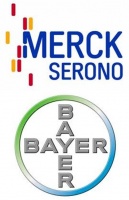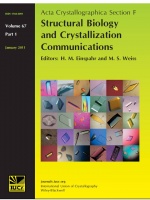Our Research
 Our research focuses mainly on structural studies of relevant human drug targets involved in chromatin remodelling (e.g. RuvBL1/2), and kinases that play key cellular roles (e.g. Polo-like kinase-1), both known to be overexpressed in highly proliferating cells and in many human tumours. These structural studies are part of our structure-based drug design preclinical projects developed in strong collaboration with pharmaceutical companies like Merck Serono Pharma and Bayer.
Our research focuses mainly on structural studies of relevant human drug targets involved in chromatin remodelling (e.g. RuvBL1/2), and kinases that play key cellular roles (e.g. Polo-like kinase-1), both known to be overexpressed in highly proliferating cells and in many human tumours. These structural studies are part of our structure-based drug design preclinical projects developed in strong collaboration with pharmaceutical companies like Merck Serono Pharma and Bayer.
Our group is also interested in understanding the mechanisms behind oxidative stress detoxification by superoxide reductases. Until recently, it was believed that elimination of superoxide was performed only by superoxide dismutases, which oxidize and reduce it to oxygen and hydrogen peroxide, respectively. However, in recent years a second process was established for superoxide elimination: its reduction, by superoxide reductases (SORs). The goal of our research is to identify and characterize the structural determinants of the superoxide reduction mechanism, an important oxygen stress response system.
More recently, we started to study the structural determinants behind centriole biogenesis. Centrioles are the main constituents of centrosomes (the principal microtubule-organizing centre of most animal cells, regulating cell shape and polarity in interphase, and spindle pole organization during mitosis), which are often supranumerary and disfunctional in a variety of cancers. Centrioles are cylindrical structures, made of nine microtubules triplets organized in a nine-fold symmetry. We ask whether the structure and oligomerization state of the proteins involved in centriole biogenesis are the key players for the observed organelle architecture.





